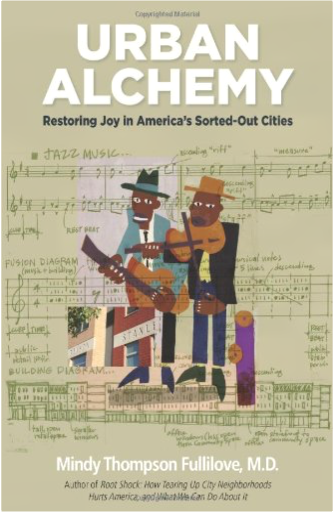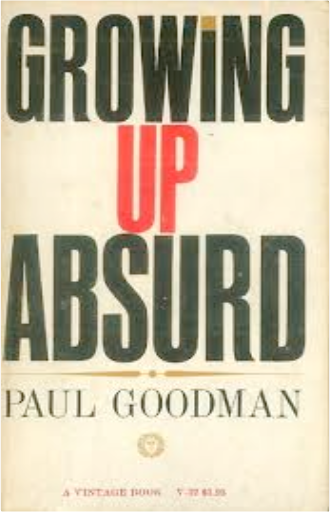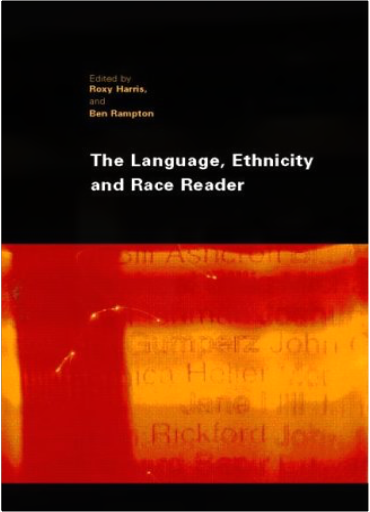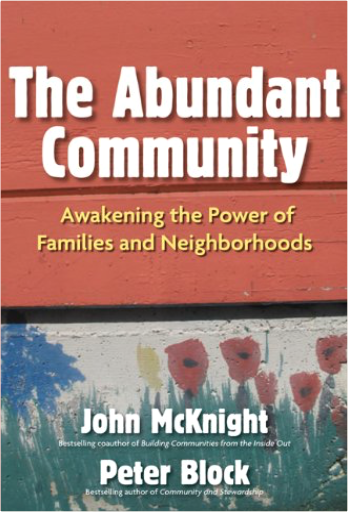
The Long Shadow: Family Background, Disadvantaged Urban Youth, and the Transition to Adulthood
Also available on Amazon
The Long Shadow focuses on children who grew up in west Baltimore neighborhoods and others like them throughout the city, tracing how their early lives in the inner city have affected their long-term well-being. Although research for this book was conducted in Baltimore, that city’s struggles with deindustrialization, white flight, and concentrated poverty were characteristic of most East Coast and Midwest manufacturing cities. The experience of Baltimore’s children who came of age during this era is mirrored in the experiences of urban children across the nation.

The New Jim Crow: Mass Incarceration in the Age of Colorblindness
Also available on Amazon
Once in a great while a book comes along that changes the way we see the world and helps to fuel a nationwide social movement. The New Jim Crow is such a book. Praised by Harvard Law professor Lani Guinier as "brave and bold," this book directly challenges the notion that the election of Barack Obama signals a new era of colorblindness. With dazzling candor, legal scholar Michelle Alexander argues that "we have not ended racial caste in America; we have merely redesigned it." By targeting black men through the War on Drugs and decimating communities of color, the U.S. criminal justice system functions as a contemporary system of racial control—relegating millions to a permanent second-class status—even as it formally adheres to the principle of colorblindness. In the words of Benjamin Todd Jealous, president and CEO of the NAACP, this book is a "call to action."

Black Street Speech: Its History, Structure, and Survival
Also available on Amazon
In the minds of many, black street speech—the urban dialect of black Americans—bespeaks illiteracy, poverty, and ignorance. John Baugh challenges those prejudices in this brilliant new inquiry into the history, linguistic structure, and survival within white society of black street speech. In doing so, he successfully integrates a scholarly respect for black English with a humanistic approach to language differences that weds rigor of research with a keen sense of social responsibility. Baugh's is the first book on black English that is based on a long-term study of adult speakers. Beginning in 1972, black men and women in Los Angeles, Philadelphia, Chicago, Austin, and Houston were repeatedly interviewed, in varied social settings, in order to determine the nature of their linguistic styles and the social circumstances where subtle changes in their speech appear. Baugh's work uncovered a far wider breadth of speaking styles among black Americans than among standard English speakers.

I'm Not a Racist, But ...: The Moral Quandary of Race
Also available on Amazon
Not all racial incidents are racist incidents, Lawrence Blum says. "We need a more varied and nuanced moral vocabulary for talking about the arena of race. We should not be faced with a choice of 'racism' or nothing." Use of the word "racism" is pervasive: An article about the NAACP's criticism of television networks for casting too few "minority" actors in lead roles asks, "Is television a racist institution?" A white girl in Virginia says it is racist for her African-American teacher to wear African attire.Blum argues that a growing tendency to castigate as "racism" everything that goes wrong in the racial domain reduces the term's power to evoke moral outrage. In "I'm Not a Racist, But . . .", Blum develops a historically grounded account of "racism" as the deeply morally charged notion it has become. He addresses the question whether people of color can be racist, defines types of racism, and identifies debased and inappropriate usages of the term.

Theatre of the Oppressed
Also available on Amazon
The innovative Brazilian playwright, director and international lecturer explicates Aristotle's poetics and the philosophies of Machiavelli, Hegel and Brecht to determine the extent to which their chief components—imitation, catharsis and, ultimately, audience control—serve up to support the status quo of a society rather than facilitate change.

Sprawl City: Race, Politics, and Planning in Atlanta
Also available on Amazon
A serious but often overlooked impact of the random, unplanned growth commonly known as sprawl is its effect on economic and racial polarization. Sprawl-fueled growth pushes people further apart geographically, politically, economically, and socially. Atlanta, Georgia, one of the fastest-growing areas in the country, offers a striking example of sprawl-induced stratification."Sprawl City" uses a multi-disciplinary approach to analyze and critique the emerging crisis resulting from urban sprawl in the ten-county Atlanta metropolitan region. Local experts including sociologists, lawyers, urban planners, economists, educators, and health care professionals consider sprawl-related concerns as core environmental justice and civil rights issues.

Keywords for American Cultural Studies
Also available on Amazon
Collaborative in design and execution, Keywords for American Cultural Studies collects sixty-four new essays from interdisciplinary scholars, each on a single term such as "America," "body," "ethnicity," and "religion." Alongside "community," "immigration," "queer," and many others, these words are the nodal points in many of today's most dynamic and vexed discussions of political and social life, both inside and outside of the academy.
Here are essays by scholars working in literary studies and political economy, cultural anthropology and ethnic studies, African American history and performance studies, gender studies and political theory. Some entries are explicitly argumentative, others are more descriptive. Throughout, readers will find clear, challenging, critically engaged thinking and writing.

Emerging Intersections: Race, Class, and Gender in Theory, Policy, and Practice
Also available on Amazon
Emerging Intersections, an anthology of ten previously unpublished essays, looks at the problems of inequality and oppression from new angles and promotes intersectionality as an interpretive tool that can be utilized to better understand the ways in which race, class, gender, ethnicity, and other dimensions of difference shape our lives today. The book showcases innovative contributions that expand our understanding of how inequality affects people of color, demonstrates the ways public policies reinforce existing systems of inequality, and shows how research and teaching using an intersectional perspective compels scholars to become agents of change within institutions. By offering practical applications for using intersectional knowledge, Emerging Intersections will help bring us one step closer to achieving positive institutional change and social justice.

Bait and Switch: The (Futile) Pursuit of the American Dream
Also available on Amazon
Bait and Switch highlights the people who’ve done everything right—gotten college degrees, developed marketable skills, and built up impressive résumés—yet have become repeatedly vulnerable to financial disaster, and not simply due to the vagaries of the business cycle. Today’s ultra-lean corporations take pride in shedding their “surplus” employees—plunging them, for months or years at a stretch, into the twilight zone of white-collar unemployment, where job searching becomes a full-time job in itself. As Ehrenreich discovers, there are few social supports for these newly disposable workers—and little security even for those who have jobs.

The Unknown City: The Lives of Poor and Working-Class Young Adults
Also available on Amazon
New research on unseen members of "Generation X"- Based on interviews with hundreds of African-American, white, and Latino men and women ages twenty-three to twenty-five in two large eastern cities (Buffalo, New York, and Jersey City, New Jersey), The Unknown City introduces members of Gen X who have been overlooked by the media. It describes their views —more often divergent than complementary —on race, affirmative action, jobs, domestic violence, education, and their communities, and reveals their struggles, hopes, and insights. This book will help shape key debates about policy and community."An ambitious look at those members of Generation X who are too often ignored. . . . Without preaching, they give readers a sense of the obstacles faced by Americans who must do without. This bleak and often poignant volume offers important insights into a critical but often overlooked part of our youth culture."—Kirkus Reviews

Discipline & Punish: The Birth of the Prison
Also available on Amazon
In this brilliant work, the most influential philosopher since Sartre suggests that such vaunted reforms as the abolition of torture and the emergence of the modern penitentiary have merely shifted the focus of punishment from the prisoner's body to his soul.

Power/Knowledge: Selected Interviews and Other Writings, 1972-1977
Also available on Amazon
In Power/Knowledge this superb set of essays and interviews, Foucault has provided a much-needed guide to Foucault. These pieces, ranging over the entire spectrum of his concerns, enabled Foucault, in his most intimate and accessible voice, to interpret the conclusions of his research in each area and to demonstrate the contribution of each to the magnificent — and terrifying — portrait of society that he was patiently compiling. For, as Foucault shows, what he was always describing was the nature of power in society; not the conventional treatment of power that concentrates on powerful individuals and repressive institutions, but the much more pervasive and insidious mechanisms by which power "reaches into the very grain of individuals, touches their bodies and inserts itself into their actions and attitudes, their discourses, learning processes and everyday lives".

Urban Alchemy: Restoring Joy in America's Sorted-Out Cities
Also available on Amazon
What if divided neighborhoods were causing public health problems? What if a new approach to planning and design could tackle both the built environment and collective well-being at the same time? What if cities could help each other? Dr. Mindy Thompson Fullilove, the acclaimed author of Root Shock, uses her unique perspective as a public health psychiatrist to explore ways of healing social and spatial fractures simultaneously. Using the work of French urbanist Michel Cantal-Dupart and the American urban design firm Rothschild Doyno Collaborative as guides, Fullilove takes readers on a tour of successful collaborative interventions that repair cities and reconnect communities to make them whole.

Beyond Resistance! Youth Activism and Community Change: New Democratic Possibilities for Practice and Policy for America's Youth
Also available on Amazon
The failure of current policy to address important quality of life issues for urban youth remains a substantial barrier to civic participation, educational equity, and healthy adulthood. This volume brings together the work of leading urban youth scholars to highlight the detrimental impact of zero tolerance policies on young people’s educational experience and well being. Inspired by the conviction that urban youth have the right to more equitable educational and social resources and political representation, Beyond Resistance! offers new insights into how to increase the effectiveness of youth development and education programs, and how to create responsive youth policies at the local, state, and federal level.

Race, Class, Power, and Organizing in East Baltimore: Rebuilding Abandoned Communities in America
Also available on Amazon
This book examines the historical and current practices of rebuilding abandoned and disinvested communities in America. Using a community in East Baltimore as an example, Race, Class, Power, and Organizing in East Baltimore shows how the social structure of race and class segregation of the past contributed in the creation of our present day urban poor and low-income communities of color; and continue to affect the way we rebuild these communities today. Specific to East Baltimore is the presence of a powerful and prestigious medical complex which has directly and indirectly affected the abandonment and rebuilding of East Baltimore. While it has grown in power and land over the past 100 years, the neighborhoods around it have decreased in size and capital, widening the gap between the rich and the poor. The author offers a critical analysis of the relationships between powerful private institutions like the Johns Hopkins Medical Institutions and government and their intention in rebuilding urban communities by asking the question “How do we determine equity in benefit?”

Growing Up Absurd
Also available on Amazon
Paul Goodman’s Growing Up Absurd was a runaway best seller when it was first published in 1960, and it became one of the defining texts of the New Left. Goodman was a writer and thinker who broke every mold and did it brilliantly—he was a novelist, poet, and a social theorist, among a host of other things—and the book’s surprise success established him as one of America’s most unusual and trenchant critics, combining vast learning, an astute mind, utopian sympathies, and a wonderfully hands-on way with words.

The Language, Ethnicity and Race Reader
Also available on Amazon
Language, Race and Ethnicity: A Reader an essential resource for all students of sociolinguistics, ethnic studies, linguistics, anthropology and intercultural studies. This accessible Reader collects in one volume the key readings on language, ethnicity and race. Roxy Harris and Ben Rampton introduce students to the current debates surrounding issues of language and diversity, colonialism and migration, identity and appropriation. Invaluable editorial material guides the student through different sections of the book, which look at how language is used in different ethnic groups and how such uses are discussed and reported. Using linguistic and cultural analysis, the Reader explores changing ideas of ethnicity and race around the world, and the ways in which these ideas shape human communication.

Mindless: Why Smarter Machines are Making Dumber Humans
Also available on Amazon
We live in the age of Computer Business Systems (CBSs)—the highly complex, computer-intensive management programs on which large organizations increasingly rely. In Mindless, Simon Head argues that these systems have come to trump human expertise, dictating the goals and strategies of a wide array of businesses, and de-skilling the jobs of middle class workers in the process. CBSs are especially dysfunctional, Head argues, when they apply their disembodied expertise to transactions between humans, as in health care, education, customer relations, and human resources management. And yet there are industries with more human approaches, as Head illustrates with specific examples, whose lead we must follow and extend to the mainstream American economy. Mindless illustrates the shortcomings of CBS, providing an in-depth and disturbing look at how human dignity is slipping as we become cogs on a white collar assembly line.

Where We Stand: Class Matters
Also available on Amazon
Drawing on both her roots in Kentucky and her adventures with Manhattan Coop boards, Where We Stand is a successful black woman's reflection--personal, straight forward, and rigorously honest--on how our dilemmas of class and race are intertwined, and how we can find ways to think beyond them.

There Are No Children Here: The Story of Two Boys Growing Up in The Other America
Also available on Amazon
There Are No Children Here, the true story of brothers Lafeyette and Pharoah Rivers, ages 11 and 9 at the start, brings home the horror of trying to make it in a violence-ridden public housing project. The boys live in a gang-plagued war zone on Chicago's West Side, literally learning how to dodge bullets the way kids in the suburbs learn to chase baseballs. "If I grow up, I'd like to be a bus driver," says Lafeyette at one point. That's if, not when--spoken with the complete innocence of a child. The book's title comes from a comment made by the brothers' mother as she and author Alex Kotlowitz contemplate the challenges of living in such a hostile environment: "There are no children here," she says. "They've seen too much to be children." This book humanizes the problem of inner-city pathology, makes readers care about Lafeyette and Pharoah more than they may expect to, and offers a sliver of hope buried deep within a world of chaos.

Amazing Grace: The Lives of Children and the Conscience of a Nation
Also available on Amazon
Amazing Grace is Jonathan Kozol’s classic book on life and death in the South Bronx—the poorest urban neighborhood of the United States. He brings us into overcrowded schools, dysfunctional hospitals, and rat-infested homes where families have been ravaged by depression and anxiety, drug-related violence, and the spread of AIDS. But he also introduces us to devoted and unselfish teachers, dedicated ministers, and—at the heart and center of the book—courageous and delightful children. The children we come to meet through the friendships they have formed with Jonathan defy the stereotypes of urban youth too frequently presented by the media. Tender, generous, and often religiously devout, they speak with eloquence and honesty about the poverty and racial isolation that have wounded but not hardened them. Amidst all of the despair, it is the very young whose luminous capacity for love and transcendent sense of faith in human decency give reason for hope.

Countering the Conspiracy to Destroy Black Boys, Vol. 2
Also available on Amazon
Offering suggestions to correct the dehumanization of African American children, this book explains how to ensure that African American boys grow up to be strong, committed, and responsible African American men.

Countering the Conspiracy to Destroy Black Boys, Vol. 3
Also available on Amazon
Offers suggestions to correct the dehumanization of African American children, and tells how to ensure that African American boys grow up to be strong, committed, and responsible African American men.

Countering the Conspiracy to Destroy Black Boys, Vol. 4
Also available on Amazon
Offering suggestions to correct the dehumanization of African American children, this book explains how to ensure that African American boys grow up to be strong, committed, and responsible African American men.

Making Democracy Fun: How Game Design Can Empower Citizens and Transform Politics
Also available on Amazon
Anyone who has ever been to a public hearing or community meeting would agree that participatory democracy can be boring. Hours of repetitive presentations, alternatingly alarmist or complacent, for or against, accompanied by constant heckling, often with no clear outcome or decision. Is this the best democracy can offer? In Making Democracy Fun, Josh Lerner offers a novel solution for the sad state of our deliberative democracy: the power of good game design. What if public meetings featured competition and collaboration (such as team challenges), clear rules (presented and modeled in multiple ways), measurable progress (such as scores and levels), and engaging sounds and visuals? These game mechanics would make meetings more effective and more enjoyable — even fun. Lerner reports that institutions as diverse as the United Nations, the U.S. Army, and grassroots community groups are already using games and game-like processes to encourage participation.

The New Political Economy of Urban Education: Neoliberalism, Race, and the Right to the City
Also available on Amazon
Urban education and its contexts have changed in powerful ways. Old paradigms are being eclipsed by global forces of privatization and markets and new articulations of race, class, and urban space. These factors and more set the stage for Pauline Lipman's insightful analysis of the relationship between education policy and the neoliberal economic, political, and ideological processes that are reshaping cities in the United States and around the globe. Using Chicago as a case study of the interconnectedness of neoliberal urban policies on housing, economic development, race, and education, Lipman explores larger implications for equity, justice, and "the right to the city". By examining the cultural politics of why and how these relationships resonate with people's lived experience, Lipman pushes the analysis one step further toward a new educational and social paradigm rooted in radical political and economic democracy.

White by Law: The Legal Construction of Race
Also available on Amazon
Exploring the social, and specifically legal origins, of white racial identity, Ian F. Haney Lopez here examines cases in America's past that have been instrumental in forming contemporary conceptions of race, law, and whiteness. In 1790, Congress limited naturalization to white persons. This racial prerequisite for citizenship remained in force for over a century and a half, enduring until 1952. In a series of important cases, including two heard by the United States Supreme Court, judges around the country decided and defined who was white enough to become American. White by Law traces the reasoning employed by the courts in their efforts to justify the whiteness of some and the non- whiteness of others. Did light skin make a Japanese person white? Were Syrians white because they hailed geographically from the birthplace of Christ? Haney Lopez reveals the criteria that were used, often arbitrarily, to determine whiteness, and thus citizenship: skin color, facial features, national origin, language, culture, ancestry, scientific opinion, and, most importantly, popular opinion.

Pipe Dream Blues: Racism and the War on Drugs
Also available on Amazon
Lusane argues that "the federal drug war being waged in the nation's capital is parallel to that waged against other communities nationwide and worldwide."--SF Bay Guardian

Ain't No Makin' It: Aspirations and Attainment in a Low-Income Neighborhood, 3rd Edition
Also available on Amazon
This classic text addresses one of the most important issues in modern social theory and policy: how social inequality is reproduced from one generation to the next. With the original 1987 publication of Ain’t No Makin’ It Jay MacLeod brought us to the Clarendon Heights housing project where we met the “Brothers” and the “Hallway Hangers.” Their story of poverty, race, and defeatism moved readers and challenged ethnic stereotypes. MacLeod’s return eight years later, and the resulting 1995 revision, revealed little improvement in the lives of these men as they struggled in the labor market and crime-ridden underground economy. The third edition of this classic ethnography of social reproduction brings the story of inequality and social mobility into today’s dialogue. Now fully updated with thirteen new interviews from the original Hallway Hangers and Brothers, as well as new theoretical analysis and comparison to the original conclusions, Ain’t No Makin’ It remains an admired and invaluable text.

The Abundant Community: Awakening the Power of Families and Neighborhoods
Also available on Amazon
The consumer society tells us that we are insufficient and that we must purchase what we need from specialists and systems outside the community. We have become consumers and clients, not citizens and neighbors. John McKnight and Peter Block show that we have the capacity to find real and sustainable satisfaction right in our neighborhood and community. This book reports on voluntary, self-organizing structures that focus on gifts and value hospitality, the welcoming of strangers. It shows how to reweave our social fabric, especially in our neighborhoods. In this way we collectively have enough to create a future that works for all.






























